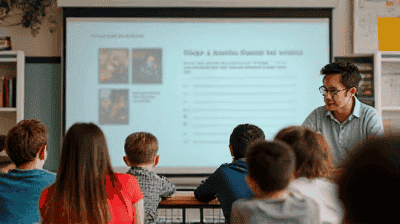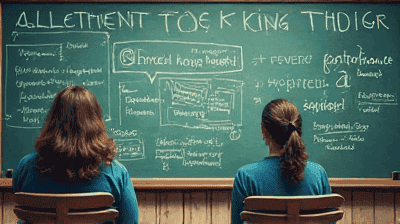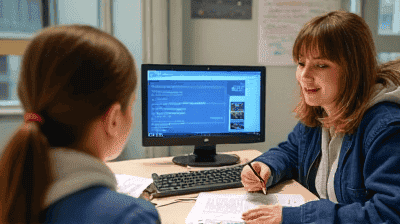Secondary Education

Personalized Learning Plans: Tailoring Education to Meet Individual Student Needs
In today's rapidly changing educational landscape, personalized learning has emerged as a key approach to address the diverse needs of students. The traditional one-size-fits-all model of education often fails to accommodate individual learning styles, strengths, and challenges. Personalized learning plans (PLPs) offer a solution by providing tailored educational experiences designed to support each student's unique journey. This article explores the concept of personalized learning plans, their importance

Teaching Critical Thinking: Strategies to Foster Analytical Skills in Students
In an increasingly complex and interconnected world, the ability to think critically is more important than ever. Critical thinking equips students with the analytical skills necessary to evaluate information, make informed decisions, and solve problems effectively. As educators in secondary education, fostering these skills is essential to preparing students for future academic challenges and professional success. This article explores practical strategies to teach critical thinking and enhance analytical

The Impact of Peer Relationships on Academic Success in Secondary School
Secondary education is a critical period in a student’s life where academic performance and personal development are deeply intertwined. While traditional factors such as teaching methods, school environment, and parental support often receive significant attention, the impact of peer relationships on academic success cannot be overstated. This article delves into the various ways peer relationships influence academic achievement in secondary school, examines the factors at play, and offers insights for edu

Preparing for College: Essential Skills Every High School Student Should Develop
As high school students approach graduation, the anticipation of college looms large on the horizon. The transition from high school to college is a significant step that can be filled with both excitement and anxiety. To thrive in the collegiate environment, students must equip themselves with a diverse set of skills beyond just academic knowledge. This article will explore essential skills that every high school student should develop to prepare for college successfully. By honing these skills, students c

The Transition to High School: Tips for Parents and Students
The transition from middle school to high school is a significant milestone in a student's educational journey. This period is often accompanied by a mix of excitement, anxiety, and uncertainty for both students and their parents. The shift to high school entails changes in academic expectations, social dynamics, and the overall school environment. To navigate this transition smoothly, it is essential for both students and parents to understand the challenges ahead and develop strategies to support a positi

Understanding the Importance of Mental Health in Secondary Education
As adolescents transition into secondary education, they face a multitude of challenges that significantly impact their mental health. The secondary school environment—combined with academic pressures, social dynamics, family responsibilities, and personal development—creates a complex landscape for students. Recognizing the importance of mental health in secondary education is crucial for educators, parents, and students themselves. This article explores the significance of mental health in secondary educa

Engaging Adolescents: Innovative Teaching Strategies for Secondary Classrooms
Engaging adolescents in secondary education can be a complex and challenging task. As students transition from childhood to adolescence, their learning styles, interests, and social dynamics undergo significant changes. Therefore, educators must adopt innovative teaching strategies to capture their attention and foster a love of learning. This article explores various strategies that can enhance engagement in secondary classrooms, promoting a positive learning environment and encouraging academic success.

Maximizing Technology in the Classroom: Tools Every Secondary Teacher Should Know
The integration of technology into the classroom has transformed the educational landscape, providing innovative ways to enhance learning and engage students. For secondary educators, using technology effectively can help address diverse learning styles, facilitate collaboration, and prepare students for a rapidly changing digital world. This article will explore key technological tools that every secondary teacher should know, along with strategies for maximizing their impact on teaching and learning.

Fostering Diversity and Inclusion in Secondary Schools: Best Practices for Educators
In today's increasingly globalized world, fostering diversity and inclusion in secondary schools is more important than ever. As schools become melting pots of different cultures, backgrounds, abilities, and identities, educators must adopt best practices that cultivate an inclusive environment where all students feel valued and supported. In this article, we will explore the significance of diversity and inclusion in secondary education, outline effective strategies for educators, and discuss the positive

Exploring Career and Technical Education (CTE) Programs in High Schools
In today's rapidly changing job market, the need for skilled professionals in various industries has never been more critical. To address this need, high schools across the country are increasingly offering Career and Technical Education (CTE) programs. These programs aim to provide students with the knowledge and skills necessary to succeed in specific careers, enhancing their employability and readiness for a dynamic workforce. This article delves into the essence of CTE programs in high schools, their be
